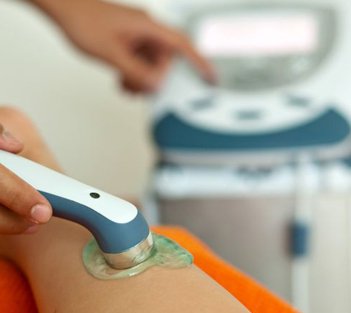 21st Oct 2015
21st Oct 2015
How Physical Therapy Increases Function Post ACL Reconstruction
In physical therapy one of the most important goals is to return a patient to normal function in their day-to-day activities. In a lot of cases, physical therapy is an essential tool for patients facing the possibility of surgery. When that possibility is realized and surgery is a necessity, physical therapy then becomes an essential part of the recovery process. ACL reconstruction is one of the most common orthopedic surgeries in the United States. When coupled with physical therapy post surgery, many patients who have undergone ACL reconstruction are able to return to their favorite activities within a shorter amount of time and with ease.
ACL reconstruction is a surgical procedure to rebuild the ligament in the center of the knee. The anterior cruciate ligament (ACL) is a stabilizing ligament which keeps the shin bone (tibia) in place. A tear of this ligament can instability in the knee which leads to other problems, such as:
- Feeling unstable in physical and daily activities
- Knee pain
- Inability to participate in physical activities
- Injury to other ligaments
Physical Therapy Modalities Useful For Treatment Post ACL Reconstruction
Using physical therapy modalities are a critical component of treating the ACL post reconstruction.
- Ultrasound Therapy: Ultrasound devices creates vibrations through the soft tissue increase the heat within the
 tissue, which increases blood flow and reduces pain. The heat produced also relaxes muscles and improves the ability of soft tissues to stretch. In a study published in the Journal of Zhejiang University Science found encouraging evidence that ultrasound can be used to stimulate tendon-bone healing post ACL reconstruction.
tissue, which increases blood flow and reduces pain. The heat produced also relaxes muscles and improves the ability of soft tissues to stretch. In a study published in the Journal of Zhejiang University Science found encouraging evidence that ultrasound can be used to stimulate tendon-bone healing post ACL reconstruction. - Electrical Stimulation: Electrical Stimulation works in two ways; 1. providing stimulation that the body responds differently than it would to pain and 2. Artificially making the muscle contract breaking up the spasm cycle. Research has shown that electrical stimulation coupled with exercise post ACL reconstruction increased range of motion for both extension and flexion of the knee.
- Low Level Laser Therapy (LLLT): Using short wavelengths of light (600-1000 nm) which penetrates the tissue, LLLT facilitates the healing of tissue, reducing both pain and swelling. In a study published in Photomedicine and Laser Surgery, results showed that LLLT improved healing and tensile strength of the medial ligament.
- Whirlpool Therapy: After the wounds of the ACL reconstruction have healed, hydrotherapy in the form of Whirlpool therapy can be useful to reduce pain and increase range of motion. ROM exercises performed while a patient is in a cold whirlpool can help increase motion for the knee.
- Range of Motion Therapeutic Exercise: Research shows that using therapeutic exercise for range of motion helps patients achieve normal knee extension post ACL reconstruction.
The Anterior Cruciate Ligament is an important ligament for the knee; it provides roughly 90% of stability in the knee joint. There are more than 200,000 cases of ACL injury annually, with more than 100,000 of these cases requiring reconstruction. Physical therapy both prior and post reconstruction is an essential part of a patient’s recovery and return to normal function in day-to-day life.





